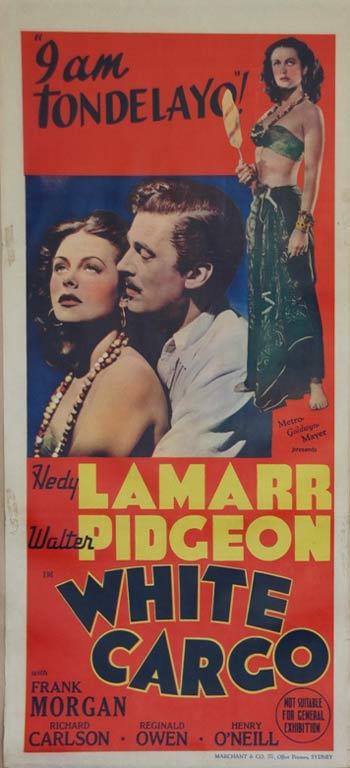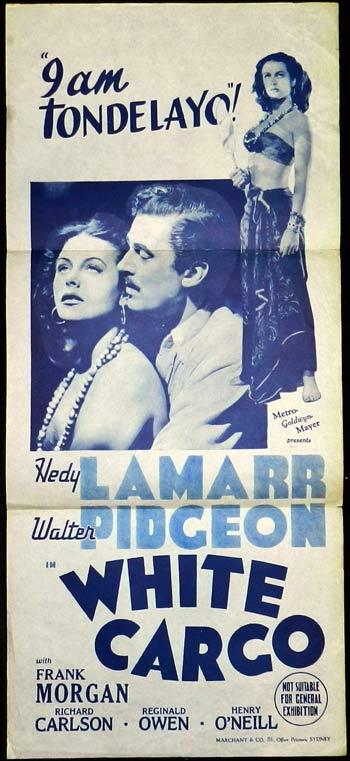White Cargo Daybill: Original or Reissue?
Where a full colour daybill is known to exist, many dealers and collectors have often routinely make the assumption that one or two colour daybills for the same title must be reissues. It is certainly true that there are many examples of one or two colour daybills that are indeed reissues but there is usually some evidence to indicate this ie printers details, censorship logos, etc.


The fact is that there are many cases where a one colour version of a poster was produced in addition to the full colour version for the original release. Unfortunately, there is not much "evidence" in the form of pressbooks and general information about the origins of Australian posters. Pronouncements about the origins of Australian daybills are often based on anecdotal information or best guesses. One example of a poster that has been assumed as being a 40s or even 50s reissue is the White Cargo Daybill, the one colour version.
The film was released in 1942 and starred Hedy Lamarr and Walter Pidgeon – "I am Tondelayo!". A full colour daybill was produced so many dealers have just assumed that the one colour daybill must be a reissue. Have a good look at the two posters side by side and then read why they were almost certainly both produced for the original release of the film.
It is quite obvious that the same artwork/plates were used for the two posters with the exception that the poster on the right is just a one colour version. Censor details are the same. Both posters were printed by Marchant. Marchant & Co Offset printers Sydney printed posters up until about 1942/3.
That would indicate that the two posters were most likely printed for the original release of the film. We do know that cinemas were charged a fee for posters. I actually have old copies of invoices that were sent to cinemas with details of how much they were charged for each poster.
It is possible that the one colour version was printed as a cheaper alternative to the full colour version but we can only really make an educated guess about this. There are many similar examples. There are also one colour daybills that exist in the absence of any known full colour daybills. So, just if you come across a one colour Australian daybill don't automatically assume it is a reissue.